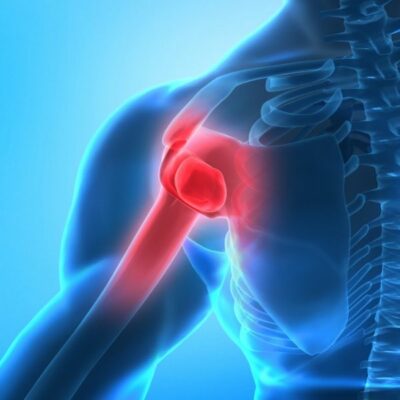Rotator Cuff Surgeon

Are you an athlete who participates in sports that involve throwing overhead? If so, you may be at risk of developing a rotator cuff injury. The rotator cuff can become damaged from repetitive overuse, a sports injury, a fall or degeneration of one of the tendons. Rotator cuff surgeon, Dr. James Mazzara provides diagnosis and both surgical and nonsurgical treatment options for patients in Manchester, South Windsor, Enfield, Glastonbury and surrounding Hartford communities who have developed a rotator cuff injury. Contact Dr. Mazzara’s team today!
What is a Mini-Open Rotator Cuff Repair?
Presently, there is a strong focus on the arthroscopic repair of the rotator cuff. A review of the orthopedic literature will reveal that a purely arthroscopic approach to repairing certain rotator cuff tears has its limitations.
The mini-open rotator cuff repair appears to offer the advantages of the formal open rotator cuff repair and the completely arthroscopic rotator cuff repair while avoiding many of their disadvantages.
For patients in Manchester, South Windsor, Enfield, Glastonbury and surrounding Hartford communities, it is important to consider formal open repair as the gold standard or benchmark when examining the results of arthroscopic treatment. Dr. James Mazzara, orthopedic shoulder surgeon understands that many of the principles required for a successful outcome after a formal open repair are also necessary to achieving a good outcome with mini-open or completely arthroscopic repairs. Dr. Mazzara can help patients decide which type of rotator cuff repair is right for them.
Fundamentals of Rotator Cuff Repair
- Glenohumeral inspection
- Anterior-inferior acromioplasty
- Release of the coracoacromial ligament
- Complete release and mobilization of any fixed, contracted tendons around the glenoid labrum, superficial bursa, coracoid base (coracohumeral ligament), rotator interval, and posterior interval (scapular spine)
- Tendon grasping suture placement
- Secure bone fixation
- Minimal deltoid surgical insult and meticulous repair
- Early restoration of passive motion
What is an Open Rotator Cuff Repair?
Despite good to excellent results in a high percentage of patients (86 – 91%), the formal open repair has been associated with some disadvantages.
The open repair requires some form of take down of the anterior deltoid combined with a lateral deltoid split. If the procedure is long and difficult, this could result in a traction injury. This problem generally heals predictably with a reported 0.5% prevalence of deltoid avulsion. In the context of a rotator cuff repair, the results following the loss of anterior deltoid function have been almost universally poor. Deltoid related complications from open rotator cuff repairs appear to be rare.
The deltoid takedown and repair required for open rotator cuff repairs requires a period of protection postoperatively to avoid inadvertent avulsion. This may preclude accelerated rehabilitation with smaller rotator cuff repairs. Also, the open repair seems to be associated with more perioperative pain than the mini-open or complete arthroscopic alternatives.
Dr. Mazzara warns that although formal open rotator cuff repairs are successful over the long term, there is a prolonged recovery period which may be related to the deltoid incision. Full recovery for an open repair of the rotator cuff generally requires 18 months.
Although the early results are encouraging, mini-open rotator cuff repair is not recommended for all rotator cuff tears. The small lateral deltoid incision may be insufficient for the repair of a large or retracted rotator cuff tear. For this reason, small easily mobilized tears are the best indication for the mini-open repair.
What are the Surgical Approaches for a Mini-Open Rotator Cuff Repair?
Two approaches may be considered for the mini-open repair for patients in Manchester, South Windsor, Enfield, Glastonbury and surrounding Hartford communities . In the first approach, an arthroscopic decompression is followed by an open repair through a lateral deltoid split.
In the alternative approach, Dr. Mazzara performs an arthroscopic decompression, followed by extensive rotator cuff mobilization, placement of arthroscopic tagging sutures or stay sutures in the cuff tear. Preparation (burring) of the greater tuberosity, debridement of the rotator cuff tendon, and placement of suture anchors may also be performed arthroscopically. The small lateral deltoid split is then performed in order to place tendon-gripping sutures on the previously mobilized cuff and to fix the cuff to bone using either suture anchors or transosseous sutures.
The two approaches to mini-open rotator cuff repairs differ with respect to the extent to which the arthroscope is used.
| Arthroscopically assisted open repair |
Mini-open assisted arthroscopic repair |
|
|---|---|---|
| Joint Inspection | Arthroscopic | Arthroscopic |
| Decompression | Arthroscopic | Arthroscopic |
| Releases | Open | Arthroscopic |
| Placement of Tagging Sutures | Open | Arthroscopic |
| Placement of Tendon-gripping Sutures | Open | Open |
| Bone-tendon Fixation | Open | Open |
The arthroscopically assisted open repair has limitations when dealing with large or massive rotator cuff repairs. The necessary surgical releases can be difficult, if not impossible, to perform through a small transdeltoid split. Significant traction on the deltoid during a difficult rotator cuff exposure, may be associated with increased episodes of frozen shoulder.
In contrast, a mini-open assisted arthroscopic repair should not be limited by the size of the lateral deltoid split. All rotator cuff preparation, including debridement of cuff edges, extensive releases, cuff mobilization, tuberosity preparation, and even suture anchor placement, is done in an arthroscopic fashion. The tendon edges may be delivered to the small opening for placement of tendon gripping sutures and then fixation to bone. Because a majority of the surgery has been performed arthroscopically, the time requirement and the exposure for the deltoid splitting portion should be reduced and deltoid injury should be minimized.
When compared to complete arthroscopic repair, the mini-open repair provides more secure bone-to-tendon fixation since tendon gripping sutures and bone augmentation can be used.
How is a Mini-Open Rotator Cuff Repair Performed?
The patient is placed in a semisitting, upright beach-chair position. A shoulder positioning device facilitates patient patient positioning. Once the shoulder is scrubbed, prepped and draped, all boney landmarks are carefully outlined with a skin marking pen to facilitate portal placement.
The arthroscope is placed in the glenohumeral joint through the posterior portal and a thorough evaluation of the joint is performed. The rotator cuff tear is identified and a lateral portal is created.
Rotator cuff mobilization starts with an intra-articular release. A hooked electrocautery device is used to release the cuff from the glenoid labrum. This allows mobilization of the entire cuff if necessary (anterior to posterior). Once the intra-articular release has been performed, the arthroscope is directed to the subacromial space.
Dr. Mazzara follows this with an arthroscopic subacromial bursectomy. The tuberosity (area of rotator cuff insertion) is slightly decorticated but a formal trough is not created. A shaver is used to debride any of the torn cuff edge that appears to be nonviable or attenuated. Stay sutures are placed in the edge of the cuff tear approximately 1 centimeter apart. Additional releases of the cuff from the glenoid are performed as necessary.
At this point the mini-open approach is initiated. A horizontal lateral incision (3-4 cm long) is made over the lateral edge of the acromion. The deltoid muscle fibers are split to expose the rotator cuff tear.
If the tear is small and easily mobilized, sutures are placed through the edge of the cuff tear which is then repaired using the suture anchors placed in the superolateral aspect of the greater tuberosity. For large tears under some tension, special intratendinous sutures are placed through the cuff and these are then repaired using the suture anchors placed in the superolateral greater tuberosity.
Following the repair, a layered wound closure is performed. An arm immobilized will be necessary for 4 to 6 weeks. Therapy is initiated after surgery depending on the size of the tear, quality of the tendon and the strength of the bone.
References
- Yamaguchi, K: Mini-open rotator cuff repair. JBJS, 83-A, 764-772, May, 2001.
